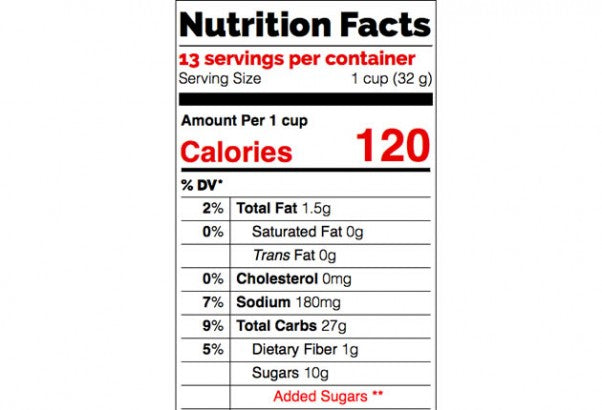Guess what’s coming to the grocery store shelves near you? A new food label! It has been designed to help you learn more about what you’re eating….well, kind of. The Nutrition Facts Panel is 20 years old and is apparently in need of a facelift.
Among the major changes: The new labels would replace out-of-date serving sizes, highlight calorie content and draw attention to "added sugars."
Currently, manufacturers can list nutrition facts for serving sizes much smaller than people typically consume. For example, a 20 ounce bottle of soda is really 2.5 servings but if you look at the calories listed, it would be for one serving. Most people don’t think about the additional calories while they are consuming the rest of the bottle.
Calorie content will be featured more prominently. Labels would also need to show the amount of "added sugars" in a food product to help people distinguish between the natural sugars found in fruit and milk, for instance, and sugars added in.
These changes are to address obesity, which is of course a very important concern in public health today. What people eat and how much they consume have changed in the last 20 years and the labels are a way to address these new issues.
Additional changes include:
- Potassium and vitamin D will be listed on labels. Food makers could also include vitamins A and C but they will no longer be required.
- “Daily values” for various nutrients such as salt, dietary fiber and vitamin D will be revised.
- Total Fat, Saturated Fat and Trans Fat will remain on the labels but Calories from Fat will no longer be required since it is believed that the type of fat is more important than the amount.





